Erlangen – a Huguenot Town
The French Reformed Church
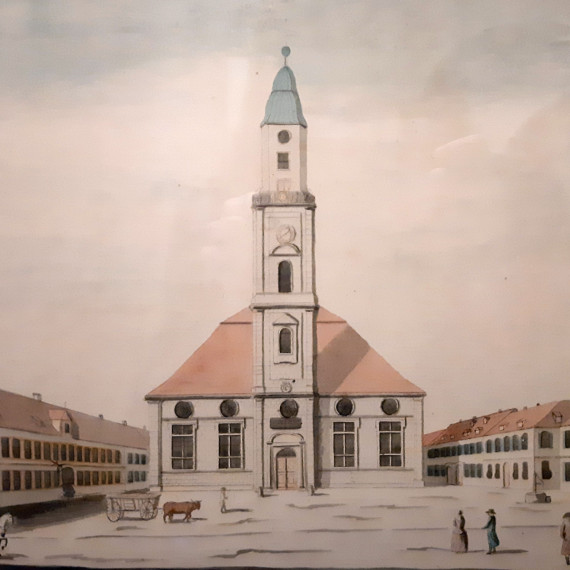 View of the French Reformed Church
View of the French Reformed Church
Coloured copper engraving, drawing by Johann Friedrich Mayr, engraving by Johann Michael Frey, around 1788
The laying of the foundation stone for the Hugenottenkirche (‘Huguenot Church’) on 14th July 1686 marked the start of construction for the New Town. The church was consecrated in 1693 and its striking steeple added in 1732/36.
The French refugees belonged to the Protestant Christian denomination named 'Calvinism' after the reformer John Calvin (1509–1564). As far as specific questions of faith are concerned, the differences between French Reformed and Lutheran Christians in the 17th century were comparatively insignificant from today's point of view. All the more emphasis did French Reformed Christians place on their own church constitution, which represented an indispensable part of their doctrine of faith. While the German Protestant Churches were governed by the religious authority vested in the sovereign, the French Reformed Church was structured 'bottom-up', i.e. based in the congregation.
The administration of the French Reformed parish was the responsibility of the consistoire (presbytery) consisting of Anciens (elders), which were elected by the congregation's heads of households. Presbyters oversaw and regulated health care, social services, church discipline, the order of worship, as well as parishioners' private conduct. From 1688 onwards, the pastors and one presbyter from each of the Franconian parishes formed a colloque (synod), which governed all church affairs and enabled joint action by the church. After 1732, the synod no longer met because the parishes that had existed outside of Erlangen had sunk into insignificance.
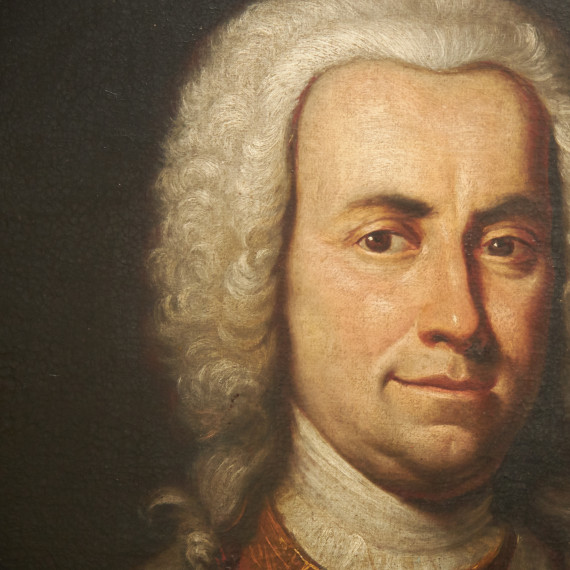
Abraham Marchand
(Basel 1686–1763 Erlangen)
Oil on canvas, Erlangen around 1740,
Loan from the Evangelical Reformed Congregation
Abraham Marchand, merchant entrepreneur, Ancien, and Captain of a citizens' defence corps, was a great benefactor of the French Reformed congregation. He even bequeathed it his entire fortune.
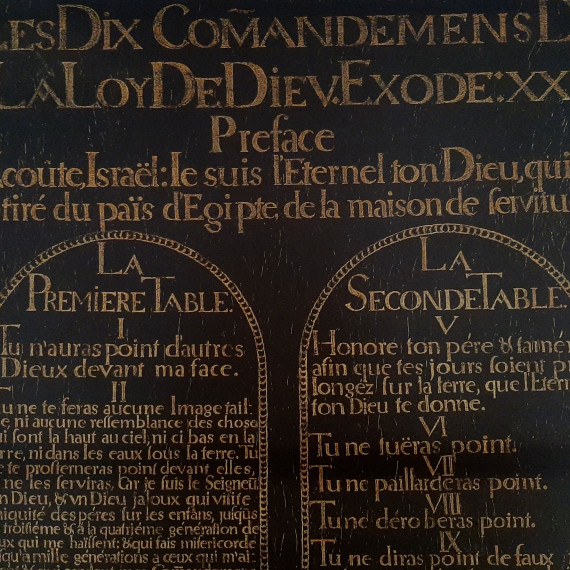
The Ten Commandments
Oil on panel, Erlangen, 1717
Loan from the Evangelical Reformed Congregation
The Ten Commandments were read aloud by a reader before every religious service. Their representation as Tablets of the Law is one of the few items that were part of the inventory of Reformed church interiors.
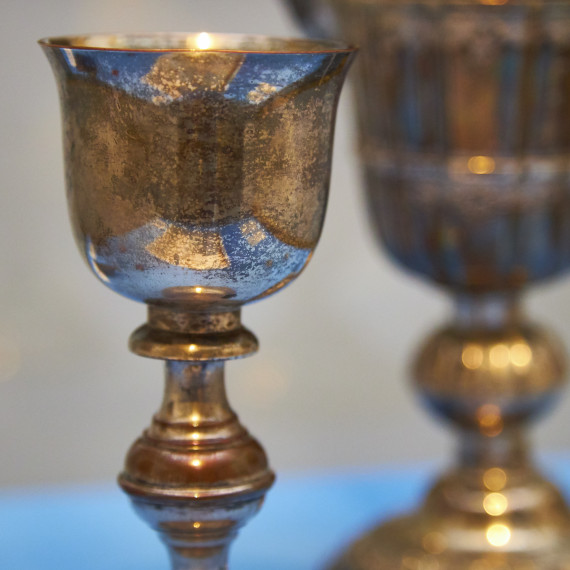
Communion ware: Wine jug and goblet
Silver, Erlangen, 18th century
Permanent loan from the Evangelical Reformed Congregation
French Reformed Christians celebrated the Eucharist four times each year with bread and red wine.
Communion tokens
Lead, Erlangen, around 1700
While a flaming heart held by two hands is depicted on the front of the tokens, the back shows Noah's dove with the olive branch. These communion tokens were in use in Erlangen from 1686 to 1920, and were handed out to the faithful in order to prevent the ineligible from participating in the Eucharist.
French hymnal
Erlangen, 1717
This hymnal was written by the merchant and hosier Marc Boucoiran, who had been a resident of Christian Erlang (so named after its founder Margrave Christian Ernst) from 1711. It contains cantiques without musical notation, as well as prayers in the French language.
Erlangen – a Huguenot Town
French and German Colonies
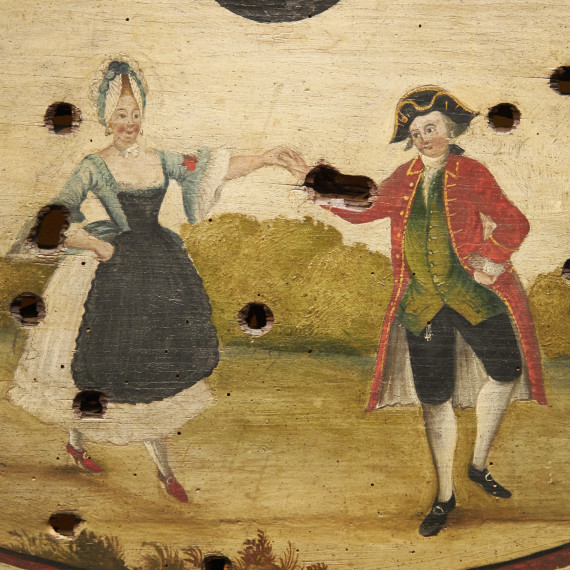 Decorative shooting target
Decorative shooting target
Donated by Etienne Barthe
Oil on panel, 1775
By 1687, around 1500 Huguenots had arrived in Erlangen and its immediate surroundings. As many soon died due to hardships endured on the journey or moved on, only about 1000 people remained in the French Colony around 1700.
Even accepting German Reformed religious refugees from the French-occupied Palatinate and Alsace did not significantly improve the Peuplierung (peopling) of the town. For this reason, the same Margravial Privileges were extended to all adherents of the Lutheran faith at the end of 1686.
Gradually, the ratio of French to German new settlers was reversed. Dwindling hopes of a return to France, becoming established economically in their new homeland, as well as increasing family ties with the German population led to the complete integration of French immigrants within a few generations. In 1822, the congregation held its last service in the French language.
Among the German population, Lutherans were clearly in the majority. Catholics were being obstructed in settling here until the end of the 18th century. Jews were only permitted to settle inside the town from 1861.
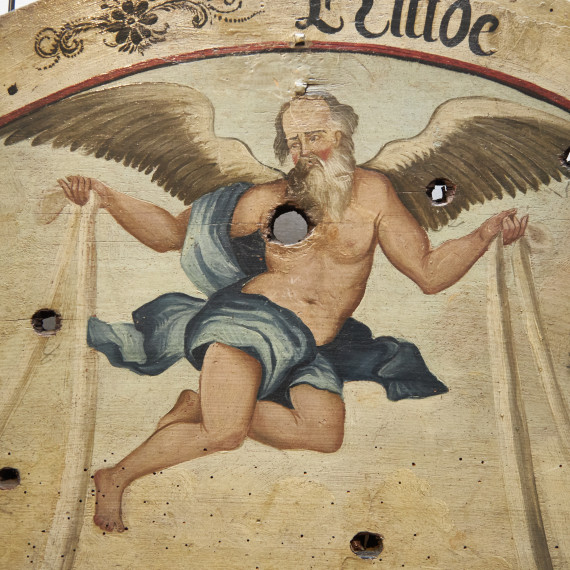
Decorative shooting target
Donated by Etienne Barthé
Oil on panel, Erlangen, 1775
This decorated disc symbolises an attitude towards life that combines a Calvinist work ethic with the enjoyment of worldly pleasures. It depicts a dancing couple between allegories of art, science, commerce, and war, with a genius hovering above. The circular inscription reads: 'While study has its charms I And work remains our fate I The crown of entertainment is / The pleasure of shooting arms'.
< Previous chapter | Next chapter >
